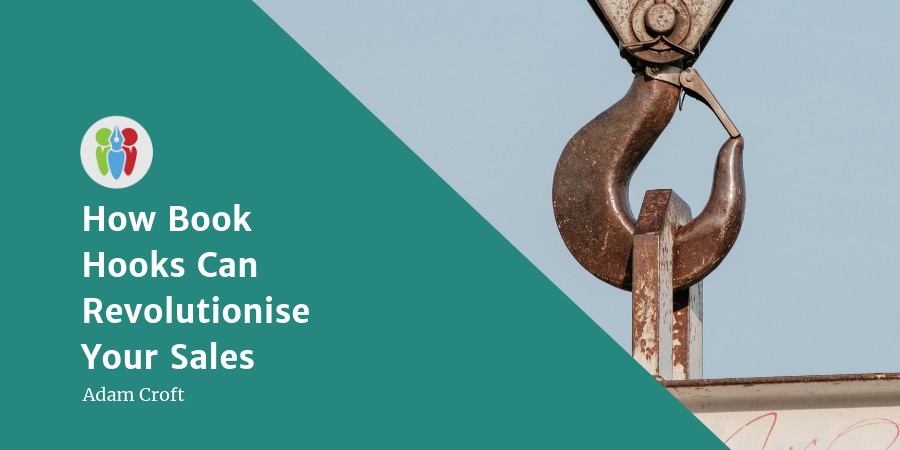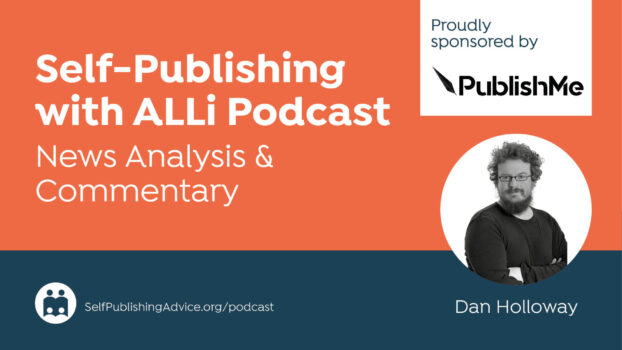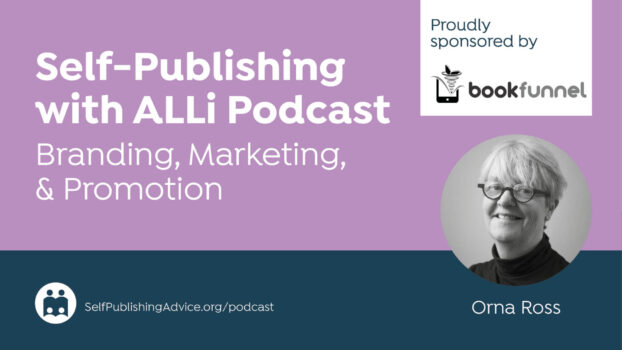 First impressions matter, both in person and for selling books. But when you've finished your 70,000-word fiction masterpiece, the prospect of condensing it into a 150-word blurb is overwhelming enough without also needing a one-line tag to catch a reader's eye. Partner member Adam Croft explains how to create a new book blurb or hook that could earn you thousands in additional sales.
First impressions matter, both in person and for selling books. But when you've finished your 70,000-word fiction masterpiece, the prospect of condensing it into a 150-word blurb is overwhelming enough without also needing a one-line tag to catch a reader's eye. Partner member Adam Croft explains how to create a new book blurb or hook that could earn you thousands in additional sales.
One of the main advantages of being an indie author is being able to be flexible and adaptable. We can make small, immediate changes and alter entire strategies by turning on a sixpence. But what if I told you the most powerful change you can make is free and will take less than an hour?
It’s generally accepted that the most important factors on a book’s sales page are, in declining order of importance:
- The cover
- The blurb
- The price
- The reviews
Covers, as we all know, are incredibly expensive to change. Pricing has a huge impact on your bottom line and is something which should be handled with care. And reviews, while being relatively unimportant in this case, are also the hardest of the four to influence.
Your blurb, though, is both incredibly important and easy to amend. And it might just shock you to see how much of a difference a few small tweaks can make to your bottom line.
An extra $1,000 a year?
Let’s assume you’ve got a book priced at $3.99 and you create a new book blurb that's more likely to convert readers. Even a fairly modest increase in sales of just one per day would result in over $1,000 a year in extra royalties. That’s $1,000 a year, per book, just for rewriting your blurb — and with just one extra sale per day.
What might seem like marginal gains can actually be extraordinarily beneficial, as the above example shows. But is writing a new book blurb really that easy?
Why 99 percent of authors get blurbs wrong
The simple fact of the matter is that authors are generally pretty terrible at writing blurbs. And the reason is simple.
We’re authors. We are storytellers. Our writing style is designed to engage and entertain. It’s not designed to sell. By the time anyone reads our words, the selling has already been done. Writing to convince and to sell is a completely different skillset, and one which very few authors possess.
This problem is compounded by authors being told to look at the sales pages of other books to see what they’re doing. Because they must be doing it right, right? Wrong.
When I wrote my book Her Last Tomorrow, I threw the rulebook out the window. I started my new book blurb with a simple, concise hook (Could you murder your wife to save your daughter?). I realized that would make readers sit up and take notice. Their interest would be piqued.
That hook conveyed the tone of the book, the genre, the content, and the atmosphere. It also asked the reader a direct question, set it in a domestic framework to which most people could relate and put them in the shoes of the protagonist, making it personal and relatable.
What I didn’t do, and what most authors do, is tell the reader exactly what happens. This is always the biggest temptation when writing a blurb and is usually the biggest mistake you can make.
Think about it. Of course all readers want to know what happens in the book. But that’s exactly why they’re buying the book. If you’ve told them, why would they bother reading it? Your sales page isn’t there to tell readers what happens in the book. It’s there to convince them to buy the book. That’s why it’s called a sales page. If you take one thing away from this, remember: A book blurb and a synopsis are two completely different things. Don’t use the blurb to tell us what happens in the book, especially if you’re going to end it with something along the lines of ‘But can Character X discover the truth to set himself free…?’ Bleurgh.
Doing it right
So blurbs are about convincing a reader to buy a book. That doesn’t mean ending with a traditional call to action (‘Buy this great book today!’). It means being original. It means using psychology to sway and convince a potential reader to buy your book. Don’t tell them to buy it. Make them want to buy it. It has to feel like the impulse has come from within them, not from you.
The psychology behind persuasion is a subject I find absolutely fascinating, and it’s far too deep for just one blog post. But these are the elements I’ve used to create my own strategy for writing blurbs.
This strategy has allowed me to sell close to two million books and resulted in over $500,000 in royalties from Amazon alone in 2018, not even including the dozens of other retailers who sell my books. It resulted in Amazon ranking me as the most widely read author in the world in February 2017, with JK Rowling in second place. Put simply, it works.
If you’d like to learn more about my strategy for using blurbs to revolutionize your book sales, you might be interested in my short course Writing Killer Blurbs and Hooks. It takes less than an hour, and usually costs just $29, but ALLi members can get all my courses at half price by using a special coupon code. Log into the member dashboard at www.allianceindependentauthors.org and navigate to Services, then Discounts & Deals, then Courses & Coaching and you'll find my discount code there.
To check out the course and create yourself a new blurb, head over to https://courses.indieauthormindset.com/p/writing-killer-blurbs-and-hooks. You can also use your ALLi discount code on any of my other courses at https://courses.indieauthormindset.com. More courses are being added all the time.
Partner member @AdamCroft is here to explain why spending a little time to create a new blurb or hook could earn you thousands in additional book sales. #indieauthor #selfpublishing #IARTG #ASMRG #writingcommunity Share on X
OVER TO YOU
What do you find difficult about writing a new book blurb? What tricks do you use to hook your readers?
If you enjoyed this post, you might like these from the ALLi archive:




